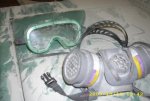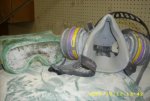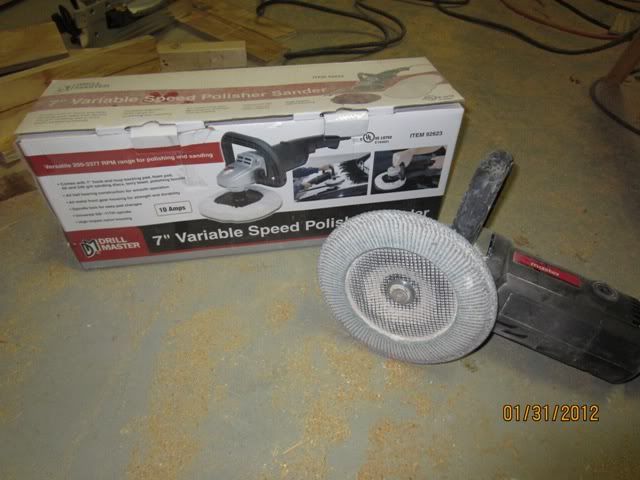Re: 12"gamefisher fiberglass repair help (pics)
sorry if these are all really dumb/simple/:facepalm: just wanna do it right
LOL......There is no such thing a s dumb question here......this is the exact reason these forums exist...so we can help people that are new to the repair side of boating

......ask all you want with no worries !!!.....also read the rules....there is no bashing here....so no one will call you names.

we actually enjoy helping people that are new to this.
don't have a grinder but do have a sander? with extra time will that work just as well or nah?
a sander will work.....but it will take some time.....well ok,....lots of time....use the largest grit you can....
if you choose to buy a grinder, even a cheap harbour freight one will work just fine...
we use a 4.5 inch grinder with a rubber backing plate, and 24 grit discs.
what does wet on wet mean? just do it before it fully dries?
wet on wet.....is referring to the resin.
yes...do it before it dries...(cures)
quick bit of info here.....
you are looking for a chemical bond.
when you glass that first layer on, you are going to get a mechanical bond....this means that you have two different types of materials with a type of glue between them, holding the new material to the sub straight.
this is why surface prep is so important....after you grind/sand it....you are removing the majority of the old resin and actually getting to the glass strands in the lay up of the sub straight. then.....you clean with acetone. the acetone actually weakens the old resin, and makes it sticky. it kind of "wakes it up"
when you glass a layer of cloth or matt to a freshly laid one.....when the resin has not had a chance to dry.
the resin and the glass mix. the resin cross links with each layer, and is chemically bonded to each other. one solid laminate with no "hard joints" between.
there is a problem with this.....if the resin gets too hot.....it will become brittle and be weak.
as you glass your stuff, you will add more resin each layer....the more resin...the hotter it gets as it cures.
if the stuff gets too hot during the application....stop.....wait a bit...it will try to cure....just let it.....when it starts to cool down.....start glassing again. (too hot means smoking !.....if you have a laser temp probe.....dont go over 190 f
i have seen resin buckets achieve over 250 deg while curing
should i cut all the pieces the same size? or should it be smallest/thinnest first, then bigger as i lay over that?
smallest first....you want each layer of csm to grab more of the hull than the last....that way if the first bond starts to fail...the next layer has more grab to the hull than the failing one.
but here is where it gets tricky.
you want the csm between each layer. so the 1708 is cut at the same size as the layer of csm under it.
then the next csm over the 1708 is larger.
if this confuses you...just ask....
i will explain....but its a lot of typing....lol
when you say add wax to that last layer, you mean a little bit of the origonal waxed resin brand that i used to the unwaxed?
for the very last layer, you can actually use that resin you have.
however, i would just buy some wax, and use it with your new stuff (it comes in a liquid form and is sold in containers) wax is also called airdry.
wax is added at 3% total volume.
and lastly, just curious as to why the inner hull would be best to add the layers instead of the outter?
this is an inside out repair,,,,meaning that both the inside .and the out side will be repaired by adding layers of glass.
however....more layers will be added on the inside than the out.
the reason for this is cosmetic.....it does not matter if you have 7 layers on the out side, and 3 on the in side, or 3 on the out side and 7 on the in !
where it does matter, is in the bulk of the layers....
if you do the most layers on the out side.....this will cause a bump in the hull, this could cause drag, handling problems, fairing problems, or just an ugly looking repair !
once the new glass encapsulate the breach.....it will become one hard layer again. it it is just a question of where do you want the bulk ?
if you do the bulk of the repair on the inside, it is far less noticeable.






































